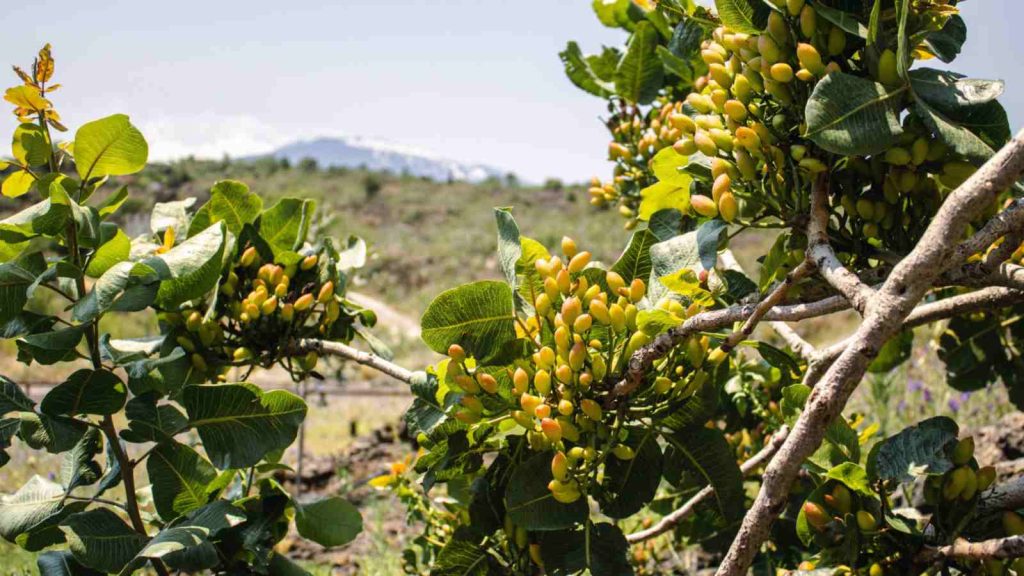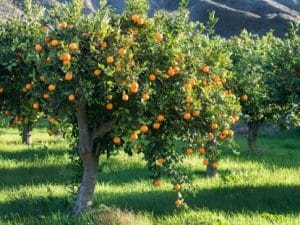Pistachio trees are one of those unusual, beautiful plants that not only produce tasty nuts but also offer a bit of elegance to any landscape. If you’re thinking about planting pistachio trees or are just fascinated by them, this comprehensive guide will walk you through all you need to know. We’ll cover everything from their fascinating history and biological makeup to how to plant, care for, and harvest these nutty beauties. By the conclusion, you’ll be prepared to either plant your pistachio tree or wow your friends with your newly acquired knowledge.
Pistachio trees (Pistacia vera) are native to Central Asia and the Middle East and thrive in hot, dry regions. These deciduous trees can reach 30 feet tall and have a characteristic spreading growth pattern. Pistachio trees are dioecious, which means there are separate male and female trees. This needs planting both varieties to ensure successful pollination and fruit yield. The trees are well-known for their endurance, allowing them to flourish in severe environments where many other plants would struggle.
The History of Pistachios
Pistachios have a long history going back thousands of years. They were popular among ancient kings and could often be spotted in Babylon’s hanging gardens. Alexander the Great brought the nuts to Europe, and settlers carried them to the United States in the nineteenth century. Pistachios are now eaten all throughout the world, and they are especially treasured for their culinary variety and nutritional value.
Biological characteristics

The pistachio tree belongs to the Anacardiaceae family, which also includes cashews, mangos, and poison ivy. Its leaves are complex, usually consisting of three to five leaflets, and the tree produces small, inconspicuous blooms. Female trees bear pistachio nuts, which are actually seeds inside a thick shell. The nuts grow in clusters, similar to grapes, and mature between late summer and early autumn.
Planting Pistachio Trees
Choosing the Right Location
Pistachio trees flourish in climates with long, hot summers and chilly winters. They require a large amount of heat to produce nuts, with ideal growing temperatures ranging from 85°F to 95°F. These trees require well-drained soil to avoid root rot and other water-related difficulties. Sandy loam is best, although they can grow in a variety of soil types as long as drainage is adequate.
Planting Process
Start by prepping the soil. Dig a hole twice the size of the root ball to give the roots plenty of room to grow. If your soil is rich in clay, consider adding compost or sand to promote drainage.
Plant the Tree: Place the tree in the hole, ensuring that the root collar (where the roots meet the trunk) is at ground level. Fill the hole with soil and carefully firm it around the roots to remove air pockets.
Watering: After planting, properly water the tree to settle the soil and ensure good root-to-soil contact. Continue to water the tree regularly, especially in the first few years, to help it create a robust root system.
Caring for Pistachio Trees
Watering
While pistachio trees are drought-tolerant once established, they require frequent irrigation in their early years and during the growing season. Deep watering once a week is often sufficient to keep the soil moist but not waterlogged. Overwatering can cause root rot and other problems, so it’s critical to find the perfect balance.
Fertilising
Pistachio trees thrive from a balanced fertiliser sprayed in early spring, before new growth begins. Nitrogen is especially crucial for young trees since it promotes healthy leaf and branch development. As the tree matures, you can switch to a fertiliser with less nitrogen to encourage nut output.
Pruning
Pruning is vital for keeping pistachio plants healthy and productive. Young trees should be pruned to create a robust, open structure that allows sunshine and air to pass through the canopy. Remove any dead or diseased branches and thin out densely populated areas to increase ventilation. Mature trees may require less frequent pruning, but it is still critical to eliminate any growth that could impede nut output.
Pest and Disease Management
Pistachio trees are very hardy, however they are subject to some pests and diseases. Aphids, scale insects, and the navel orangeworm are some of the most common pests. Regular monitoring and early intervention are critical in managing these pests. Pistachio trees are also susceptible to diseases such as verticillium wilt and alternaria late blight. Proper spacing, pruning, and excellent hygiene can assist to avoid these concerns.
Harvesting Pistachio
Pistachios are suitable for harvest in late summer to early autumn, approximately six to seven months after blossoming. The nuts are mature when their hulls, or outer coverings, start to split open, revealing the hard shell inside. The hull colour will shift from green to yellowish-red or pink, indicating that the nuts are ready for harvest.
How To Harvest
Pistachios can be harvested by hand or, in larger farms, with motorised shakers. Home growers can aid collect nuts by placing a tarp or sheet under the tree and gently shaking the branches. Make sure to separate the nuts from the hulls as soon as possible to avoid mould and other problems.
Post-harvest Processing
After harvesting, the nuts must be dried to reduce moisture content and avoid spoiling. Spread the nuts in a single layer on a drying rack or tray and store in a warm, dry place with sufficient airflow. To ensure that the nuts dry evenly, stir them occasionally. Once dried, put the pistachios in an airtight container in a cool, dark location.
Related Posts:
FAQS
How long does it take for a pistachio tree to produce nuts?
Pistachio trees normally start producing nuts in the fourth or fifth year after planting. However, large yields may not occur until the tree is 10-12 years old.
Do I have to plant more than one pistachio tree?
Yes, because pistachio trees are dioecious, you’ll need at least one male and one female tree to ensure pollination and nut production.
Can pistachio trees thrive in containers?
Pistachio trees can be grown in big containers, but they are best planted in the ground where they have plenty of room to develop their roots.
How much water do pistachio trees require?
Pistachio trees require regular watering, particularly in their first few years. Deep watering once a week is usually sufficient, although the frequency can vary according on the environment and soil conditions.
Are pistachio trees drought tolerant?
Yes, once established, pistachio plants are quite drought tolerant. However, they still require appropriate water during the growth season to generate a healthy yield of nuts.
Can pistachio trees withstand harsh winters?
Pistachio trees require a specific number of cooling hours to break dormancy and produce nuts. They can withstand harsh winters, however excessive temperatures below 15°F can harm the tree.
Conclusion
Pistachio trees make an excellent addition to any garden, providing both visual appeal and a plentiful yield of delicious nuts. While they demand some patience and care, the delight of collecting your own pistachios makes the effort worthwhile. Whether you’re an experienced gardener or a beginner, these hardy trees can grow with the correct circumstances and care.




